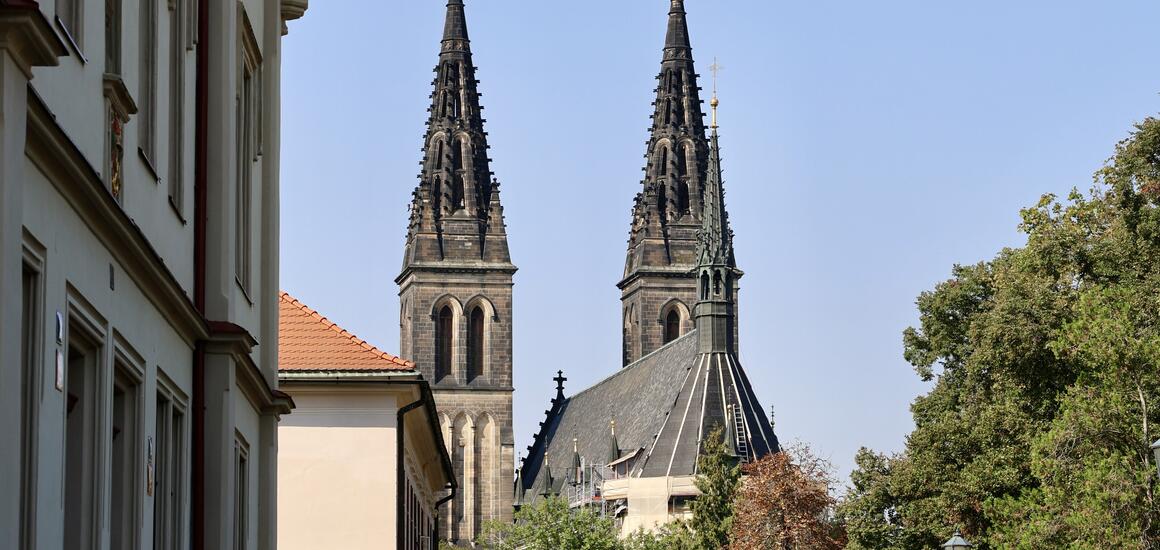
DATE OF VISIT: 18th September 2024
Vyšehrad Castle, is located on a hill overlooking the Vltava River in Prague, is one of the most historically significant sites in the Czech Republic. Its rich history spans from early legends of the Czech nation to modern times, serving as a symbol of Prague's political, military, and religious evolution.
Early Origins and Mythical Foundations
Vyšehrad is steeped in legend, often linked to the founding myths of the Czech nation. According to the famous Czech Chronicle by Cosmas of Prague and other medieval legends, Vyšehrad was the seat of the semi-mythical Princess Libuše, a prophetess who is said to have predicted the rise of Prague and the Přemyslid dynasty. Though much of these early tales are considered myth, they reflect Vyšehrad’s early cultural importance.
10th – 11th Centuries: Royal Stronghold
Historically, Vyšehrad emerged as a fortified settlement during the late 10th century. In the 11th century, it gained prominence under Vratislav II, the first king of Bohemia (1085–1092). Vratislav made Vyšehrad his royal residence, strengthening its fortifications and establishing a Romanesque-style basilica dedicated to St. Peter and Paul. During this time, Vyšehrad rivalled Prague Castle as a political and religious centre of Bohemia.
Decline and Integration into Prague (12th – 14th Centuries)
After Vratislav II’s reign, Vyšehrad's importance began to decline. The Přemyslid rulers, who had shifted their focus back to Prague Castle, let the site lose its royal status. However, under Charles IV in the 14th century, Vyšehrad regained some of its former glory. Charles IV included Vyšehrad within the fortifications of his new Prague New Town and rebuilt the basilica. Despite these efforts, it did not reclaim its position as a royal residence.
17th Century: Baroque Fortress
Vyšehrad's next significant phase came in the 17th century during the Thirty Years' War, when it was transformed into a Baroque military fortress by the Habsburgs. The construction of bastions, casemates, and heavy fortifications around Vyšehrad provided strategic defence against Swedish and other foreign forces. While it no longer served as a royal or political seat, it was vital to the defense of Prague.
19th Century: National Revival and Vyšehrad Cemetery
In the 19th century, Vyšehrad became associated with Czech national identity. During the Czech National Revival, Vyšehrad was seen as a symbol of the country’s historical roots and a source of pride for the Czech people. The establishment of the Vyšehrad Cemetery and the Slavín mausoleum transformed the site into a national pantheon, where many famous Czech artists, writers, and leaders, such as Antonín Dvořák and Bedřich Smetana, are buried.
Modern Era: Cultural and Historical Landmark
Today, Vyšehrad Castle is a prominent cultural and historical landmark. Visitors can explore the remnants of its ancient fortifications, the beautiful neo-Gothic Basilica of St. Peter and Paul, and the Vyšehrad Cemetery, which is a tribute to Czech cultural heritage. Its position overlooking the Vltava River and panoramic views of Prague make it one of the city's most picturesque locations.
The Basilica of St. Peter and St. Paul at Vyšehrad Castle has a long and rich history that dates back to the 11th century. Here's a summary of its evolution:
1. Foundation and Early Romanesque Period (11th Century)
- Founded by Vratislaus II (Duke of Bohemia) in 1070–1080 as part of his effort to make Vyšehrad a royal residence.
- Originally built in the Romanesque style with three naves, the basilica was dedicated to Saints Peter and Paul.
2. Gothic Rebuild (14th Century)
- Under the rule of Charles IV in the mid-14th century, the basilica was significantly rebuilt in the Gothic style.
- Vyšehrad lost its importance as a royal seat when Charles moved the capital to Prague Castle, but the church retained its status.
3. Baroque Modifications (17th Century)
- During the Baroque period, particularly after damage from wars, the church underwent several repairs and reconstructions.
- The interior was adorned with Baroque decor and frescoes during this time.
4. Neo-Gothic Renovation (Late 19th Century)
- In the late 19th century (1885–1903), architect Josef Mocker led a major reconstruction of the basilica in the Neo-Gothic style, giving it the current appearance.
- The twin spires were added during this period, and the church's facade was heavily redesigned to reflect the prevailing Gothic Revival trends.
5. 20th Century and Modern Times
- In 2003, Pope John Paul II elevated the church to the status of a minor basilica.
- Today, the basilica is not only a religious site but also a historical and cultural monument within the Vyšehrad complex. It contains beautiful stained-glass windows, frescoes, and artworks.
Associated Cemetery: Vyšehrad Cemetery
- Adjacent to the basilica is the Vyšehrad Cemetery, where many famous Czech figures, including composers like Antonín Dvořák and writers like Karel Čapek, are buried.





































Add new comment